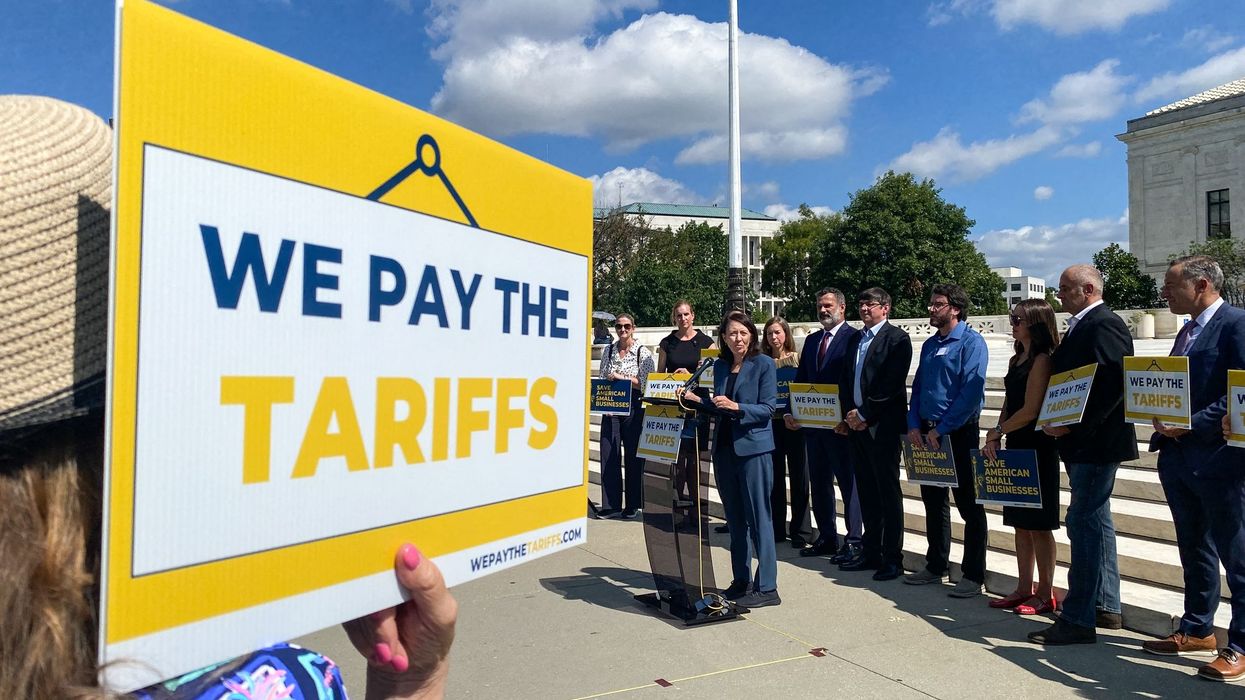This is precisely the problem. What looks like administrative housekeeping represents the dismantling of one of the most effective tools the federal government ever created to help working people and local economies build wealth.
Understanding what we have lost requires understanding what the fund actually did, which is harder than it sounds because the work was so determinedly practical. The CDFI Fund began in 1994, in that brief Clinton-era window when both parties still pretended to care about the specific geometry of American inequality, not inequality as an abstraction to be lamented or celebrated, but the actual spatial reality of capital disappearing from entire regions of the country.
The message reads clearly: Certain people, certain places, are not worth the investment, no matter how small, no matter how effective.
By the early 1990s, the mechanics of abandonment were clear. Banks had discovered they could make more money financing suburban developments and corporate mergers than lending to the people who actually lived in Flint or Pine Ridge or the Mississippi Delta. Redlining had been illegal for decades, but you didn't need explicitly racist policies when you had risk models that just happened to define entire communities as unprofitable. The result was a map of America divided into places where credit flowed freely and places where it had stopped flowing at all.
The CDFI Fund offered a simple solution: seed money for local lenders who were willing to do the work that big banks had abandoned. These were credit unions, community development banks, and loan funds that knew their borrowers personally, understood the local economy's rhythms, and had better repayment rates than many commercial lenders precisely because they were not trying to jam every applicant through the same algorithm. The fund's proposition was straightforward. If the federal government absorbed some of the early risk, the cost of building institutional capacity, the uncertainty of lending in disinvested markets, private capital would follow. And it did. For every federal dollar invested, roughly eight more came from private banks and investors. This was market making in places the market had written off.
Over 30 years, the program quietly assembled a record that should have made it politically untouchable. Affordable homes built or financed. Hundreds of thousands of small businesses and farms kept afloat or launched. Grocery stores in food deserts. Rural health clinics. Childcare centers that allowed parents to work. The fund's annual budget remained microscopic by federal standards, less than one-tenth of 1% of federal spending, a rounding error in the defense budget, less than we spend in an afternoon on interest payments on the national debt.
Two-thirds of the money went to rural and small-town America, the places we are endlessly told have been forgotten by coastal elites and federal bureaucrats. In West Virginia and Oklahoma and Mississippi, the CDFI Fund was often the only source of affordable capital for people trying to start a business or expand a farm. When the pandemic hit and the big banks utterly failed to deliver Paycheck Protection Program loans to actual small businesses, CDFIs stepped in and moved billions in relief to the people who needed it. A Republican Congress allocated more than $12 billion to the program in 2020 because the work was so obviously effective that even in a moment of total partisan fracture, both sides could see it.
The decision to eliminate the fund during a shutdown allegedly about fiscal discipline becomes genuinely difficult to parse on any rational level. A credit union helping a farmer in rural Oklahoma buy equipment qualifies as essential economic infrastructure. A small business owner in Alabama repairing a roof with an affordable loan represents exactly the kind of entrepreneurship politicians claim to champion. The fund financed the least ideological activity imaginable: commerce. Loans for tractors and storefronts and roofs. Yet treating this program as expendable serves a purpose. It transforms practical infrastructure that helps people build equity and create jobs into something that can be discarded without having to reckon with what is actually being destroyed.
What we are watching represents a category error elevated to governing philosophy. The people eliminating the CDFI Fund claim to be advancing a vision of limited government, of returning power to communities, of letting markets work without federal interference. The fund embodied that vision. It was small, disciplined, and targeted. It did not replace markets; it created the conditions for markets to function in places they had abandoned. It rewarded work and ownership and entrepreneurship, all the things conservative politicians claim to revere. It did this while leveraging massive amounts of private capital, proving that government and markets could be partners rather than adversaries. If you actually believed in the rhetoric of small but effective government, the CDFI Fund would be the model you built outward from.
If the CDFI Fund stays dead, we will have chosen a particular vision of what government is for, and it is a grim one. Government becomes landlord and cop, the entity that collects and enforces but does not build.
We are not cutting the Fund because it failed. We are cutting it because its success exposes the incoherence of what "small government" has come to mean. The government continues to expand in all the ways that involve surveillance, enforcement, and punishment. What shrinks is the part of government that lends, that invests, that takes on risk so that private actors will follow. We keep the agencies that police and audit and deport, and we eliminate the ones that help a mechanic in rural Alabama buy the shop where he works or finance a grocery store on a South Dakota reservation so families do not have to drive 40 miles for food. This represents a preference for a government that extracts over one that builds.
The people who will pay for this are the people who have been paying for decades of policy designed in their name but against their interest. The CDFI Fund served exactly the communities that elected the politicians now calling it unnecessary: working-class families in regions gutted by globalization and bank consolidation, small towns where the factory closed and nothing replaced it, Native communities where the nearest bank branch is an hour away. These are places that have been told again and again that the market will provide, that government is the problem, that they need to be self-reliant. Then when a program appears that actually helps them be self-reliant, that gives them access to the capital they need to own rather than rent, to build rather than wait, it gets swept away. The cruelty here compounds itself. The message reads clearly: Certain people, certain places, are not worth the investment, no matter how small, no matter how effective.
The damage will unfold in the way that budget cuts always do: slowly, locally, in ways that do not generate headlines. Hundreds of CDFIs have pending applications for 2025 funding. Those awards form the core of operating budgets, the money that allows these institutions to lend at all. Without them, a developer planning affordable housing will lose financing and cancel the project. An entrepreneur will give up on expanding. A family that could have afforded a home will keep renting. None of these qualify as catastrophic failures in isolation. They accumulate. They compound. They are the small subtractions that, over years, transform a place from one that still believes in its future to one that has accepted its managed decline.
When those places continue to hollow out, when the remaining jobs disappear and the young people leave and the buildings crumble, the same politicians who eliminated the tools that might have helped will return with explanations that conveniently blame everyone except themselves. It will be the fault of cultural decay or moral failure or not trying hard enough. No one will acknowledge that we made a choice to defund the institutions that helped people build, while preserving and expanding the ones that punish. This represents the con at the heart of the current discourse about government: We dismantle the programs that work, watch the predictable failures that follow, and then use those failures as evidence that government cannot work. The prophecy fulfills itself as discovery.
The CDFI Fund's elimination also clarifies something uncomfortable about how we talk about economic policy in this country. We have entire industries built around helping wealthy people and large corporations access capital: carried interest loopholes, opportunity zones, tax credits for real estate development, subsidies for industries that have not needed them in decades. We have a Federal Reserve that will move heaven and Earth to ensure that financial markets have liquidity. A program that helps working people access a fraction of that capital, that creates actual jobs and ownership in places the market has abandoned, gets deemed expendable. The asymmetry reveals who the economy is designed to serve and who it is designed to exclude.
There is a broader pathology here about what kind of government we are willing to tolerate. We accept, without much controversy, a national security apparatus that costs nearly a trillion dollars annually. We accept a carceral system that incarcerates more people than any other nation on Earth. We accept subsidies for fossil fuel companies and tax breaks for private equity firms. The idea that government might invest a few hundred million dollars to help small businesses in struggling towns access loans somehow becomes a bridge too far. The issue concerns what we are spending on. We have built a state that is very comfortable exercising power over people and very uncomfortable helping them.
If the CDFI Fund stays dead, we will have chosen a particular vision of what government is for, and it is a grim one. Government becomes landlord and cop, the entity that collects and enforces but does not build. Government gives up on the idea that policy can be a tool for shared prosperity rather than just a mechanism for distributing the gains to those already winning. This transcends left or right, progressive or conservative. We either believe that people who work for a living in places the market has forgotten deserve a chance to build something, or we have decided that some places and some people lie beyond reach and should be left to fend for themselves in an economy that has made clear they are surplus.
When the shutdown ends, and it will end, because these things always end, Congress will face a choice. It can restore the CDFI Fund quickly and with enough resources to make up for lost time, or it can let this become permanent, another small program that vanished in the chaos and never came back. The decision will reveal whether any of the rhetoric about helping working people and reviving struggling communities was ever sincere, or whether it was always just performance.
The CDFI Fund proved for 30 years that a mechanic in Alabama buying his shop and a grocery store serving a South Dakota reservation are worth a federal investment, that the work of building and lending can succeed when government chooses to be a partner rather than an overseer. Its elimination announces we have made a different choice. The real casualty of this shutdown will outlast whatever budget deal finally ends it. It will be measured in the homes not built, the businesses not started, the communities that stopped believing they were worth investing in. That loss has already begun.
If you believe the CDFI Fund should be restored, you can sign and share this petition. It will be shared with members of Congress on October 17.


